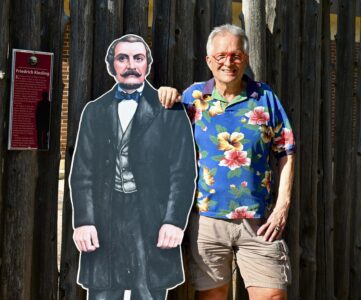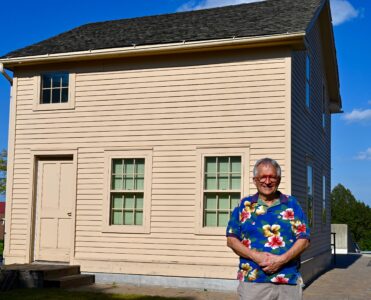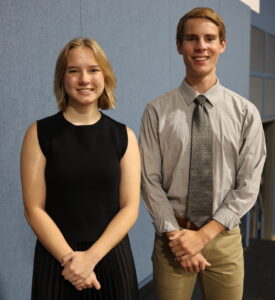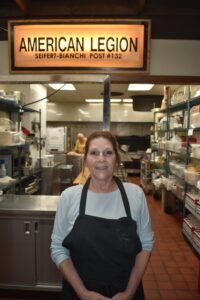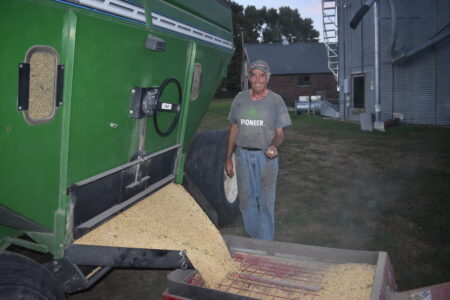Keesling meets Kiesling
Washington State man visits New Ulm in search of family’s past
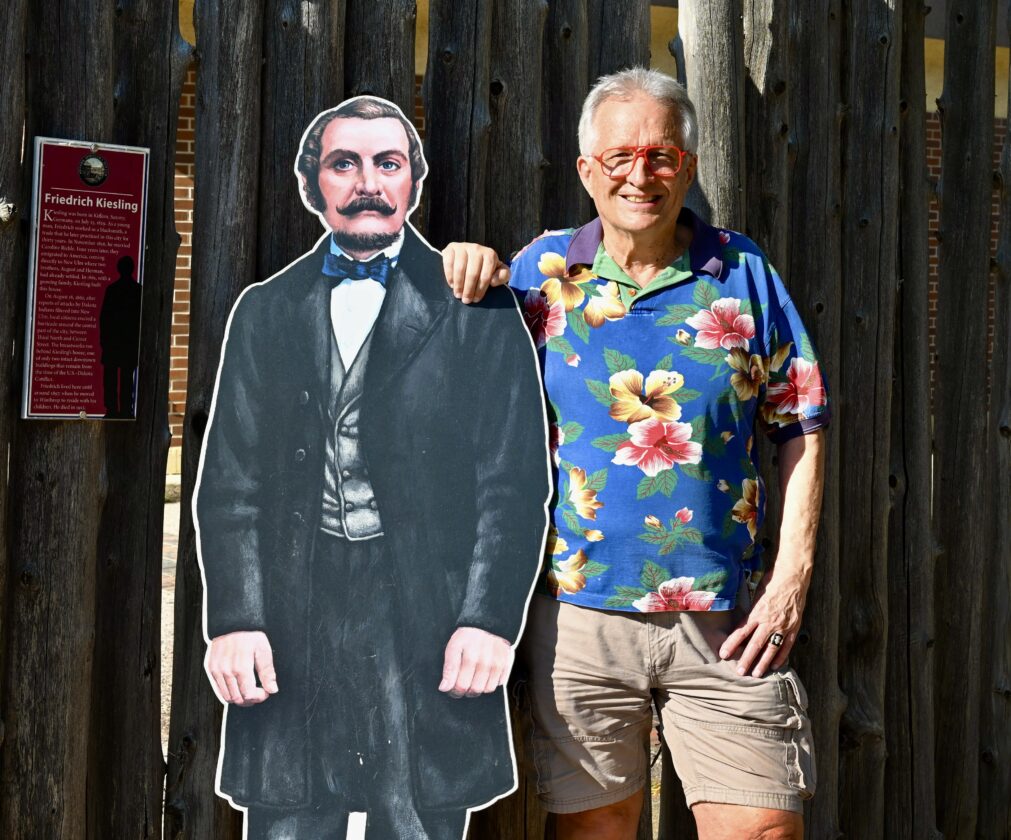
Scott Keesling poses with a cutout of his distant relative Frederich Kiesling while visiting New Ulm for the first time. Scott Keesling began exploring his family history after receiving an article about his relatives founding of the New Ulm.
NEW ULM — One man’s search for his roots landed him in New Ulm recently and changed his life forever.
“There is something about being able to touch things that your ancestors touched that gives new meaning to your own existence,” said Scott Keesling while visiting The Kiesling House on Minnesota Street.
Keesling is the great, great, great grandson of August Kiesling who’s brother Friedrich constructed the Kiesling House at 220 N. Minnesota Street in 1861. The Kiesling House is one of the few wood-frame buildings to survive the U.S.-Dakota War of 1862. It is one of only three downtown structures from that time period remaining in New Ulm.
August Kiesling initially immigrated to Chicago in 1848, however, due to some antagonism in that city, he was looking for a fresh start in the frontier territories. He was part of a Chicago based search party that led to settlement in New Ulm in collaboration with the more well-known group of Cincinnati, Ohio.
Growing up in Seattle area, Scott Keesling didn’t show much interest in his genealogy.
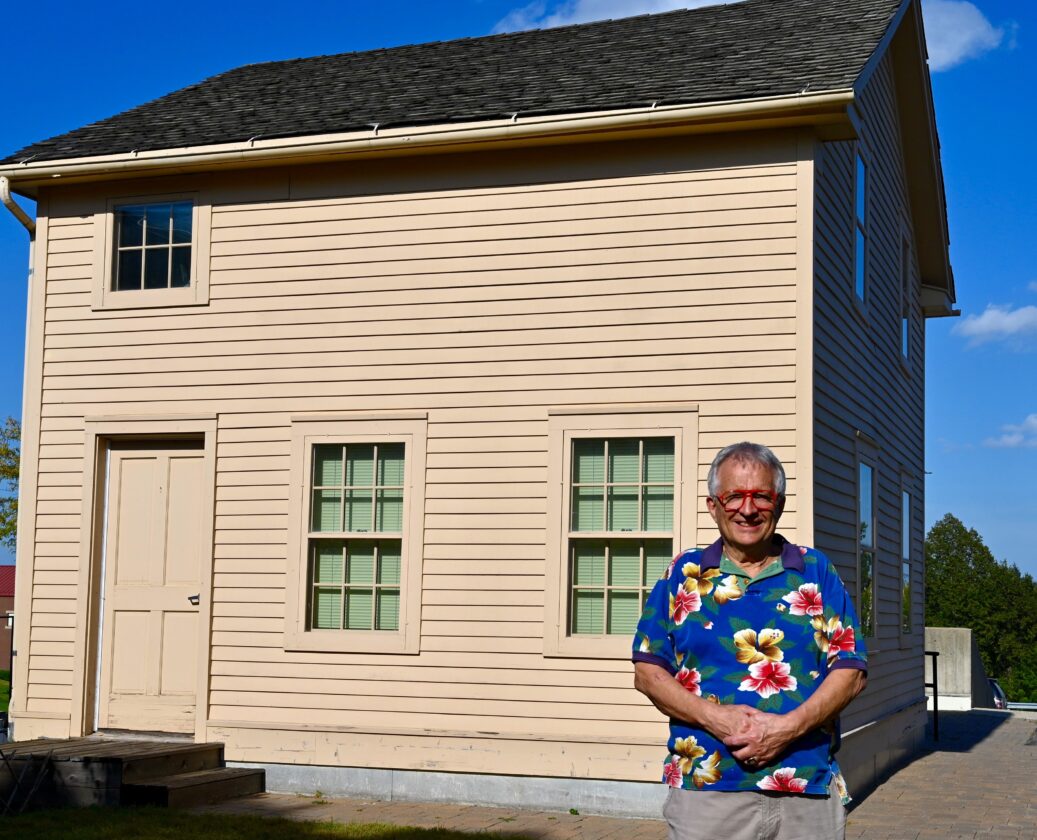
Scott Keesling stands in front of the historic Kiesling House in downtown New Ulm. Scott Keesling is the great, great, great nephew of Frederich Kiesling the man who built the house in 1861. Until recently, Scott Keesling was unaware of his family connection to New Ulm.
“My parents never talked much about their past, either that or as a young man I didn’t care about such things.” Scott was more interested in skiing at the time and became a ski instructor which led him to Japan representing multiple US ski resorts, followed by a commercial real estate career in Los Angeles. It wasn’t until he moved back to Washington State to care for his aging parents that stories of his past started to surface.
His grandfather Hugo had left Minnesota after the US-Dakota War and became a very successful apple farmer in the apple capital of Wenatchee Valley. At one point there was a town Kiesling named after him where he was mayor, yet during the great depression, the Kieslings lost everything just as they were trying to expand their apple business. Hugo moved his family to Seattle and became a lawyer. Growing up, Scott remembers his grandparents as people of few words.
“They never talked about history, so I never gave it much thought,” he said.
Keesling’s father James also went on to become a prominent lawyer and ultimately ran for office as a judge. The story of how they changed the spelling of their name from Kiesling to Keesling is somewhat muddled.
The story Scott heard from his father was that he wanted to make it easier for people to pronounce his name as he was running for office. At his father’s funeral, one of his close friends debunked that myth stating after World War II it was unbecoming to be associated with Germany and that was the reason he felt James Keesling decided on the change.
Out of the blue, Keesling received an article from his brother-in-law about how August Kiesling was involved in a search party for a new community that ultimately led to the creation of New Ulm. Piquing his curiosity, Scott contacted the Brown County Historical Society and happened to be connected to Darla Gebhard.
“If it wasn’t for Darla’s infectious enthusiasm, I probably would never have come to New Ulm in search of answers,” Keesling said.
She recommended several books and Scott started down a path of discovery.
“I feel like I know these places and people, even though this is my first time visiting New Ulm.” Looking back on his research, Keesling said “I spent two years wetting an appetite for something that previously didn’t exist!”
Scott was inspired to learn more. Gebhard has been connecting Keesling to others who have similar connections in New Ulm and surrounding areas.
“This whole experience of connecting with my past and sense of place has given me new meaning to my existence,” said Keesling, “I now want to travel to Leipzig to dig deeper into my ancestry.”
A chance shared article and phone conversation led Scott on a journey he never imagined. Keesling is interested to connect with people who have shared ancestry with his and would love to hear from any of the readers who might have information or connections. He can be reached by contacting the Brown County Historical Society.
- Scott Keesling poses with a cutout of his distant relative Frederich Kiesling while visiting New Ulm for the first time. Scott Keesling began exploring his family history after receiving an article about his relatives founding of the New Ulm.
- Scott Keesling stands in front of the historic Kiesling House in downtown New Ulm. Scott Keesling is the great, great, great nephew of Frederich Kiesling the man who built the house in 1861. Until recently, Scott Keesling was unaware of his family connection to New Ulm.

